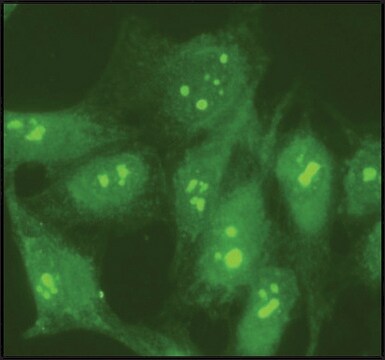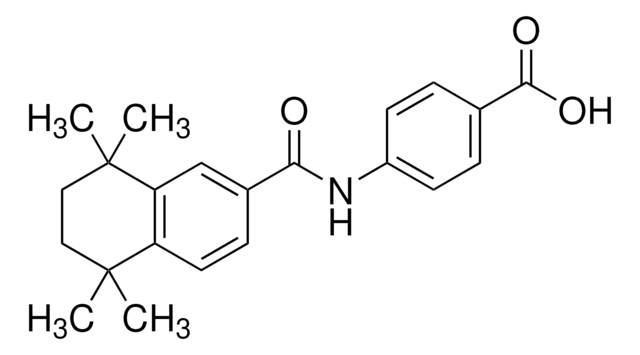N6288
Anticorpo anti-nucleolina−Atto 488
1.5-3.0 mg/mL, affinity isolated antibody, buffered aqueous solution
Sinonimo/i:
Anti-NCL, PROTEIN C23
About This Item
Prodotti consigliati
Origine biologica
rabbit
Coniugato
Atto 488 conjugate
Forma dell’anticorpo
affinity isolated antibody
Tipo di anticorpo
primary antibodies
Clone
polyclonal
Forma fisica
buffered aqueous solution
Reattività contro le specie
human, mouse, rat
Condizioni di stoccaggio
protect from light
Concentrazione
1.5-3.0 mg/mL
tecniche
direct immunofluorescence: 0.5-1.0 μg/mL using human HeLa, rat NRK and mouse 3T3 cells
Fluorescenza
λex 500 nm; λem 522 nm in PBS
λex 500 nm; λem 522 nm
N° accesso UniProt
Condizioni di spedizione
dry ice
Temperatura di conservazione
−20°C
modifica post-traduzionali bersaglio
unmodified
Informazioni sul gene
human ... NCL(4691)
mouse ... Ncl(17975)
rat ... Ncl(25135)
Descrizione generale
Find more information here
Specificità
Immunogeno
Applicazioni
Azioni biochim/fisiol
Stato fisico
Stoccaggio e stabilità
Esclusione di responsabilità
Non trovi il prodotto giusto?
Prova il nostro Motore di ricerca dei prodotti.
Prodotti correlati
Codice della classe di stoccaggio
10 - Combustible liquids
Classe di pericolosità dell'acqua (WGK)
WGK 2
Punto d’infiammabilità (°F)
Not applicable
Punto d’infiammabilità (°C)
Not applicable
Dispositivi di protezione individuale
Eyeshields, Gloves, multi-purpose combination respirator cartridge (US)
Certificati d'analisi (COA)
Cerca il Certificati d'analisi (COA) digitando il numero di lotto/batch corrispondente. I numeri di lotto o di batch sono stampati sull'etichetta dei prodotti dopo la parola ‘Lotto’ o ‘Batch’.
Possiedi già questo prodotto?
I documenti relativi ai prodotti acquistati recentemente sono disponibili nell’Archivio dei documenti.
Articoli
Immunoblotting (Western blot transfer) is a common technique in modern proteomics research.
Il team dei nostri ricercatori vanta grande esperienza in tutte le aree della ricerca quali Life Science, scienza dei materiali, sintesi chimica, cromatografia, discipline analitiche, ecc..
Contatta l'Assistenza Tecnica.







